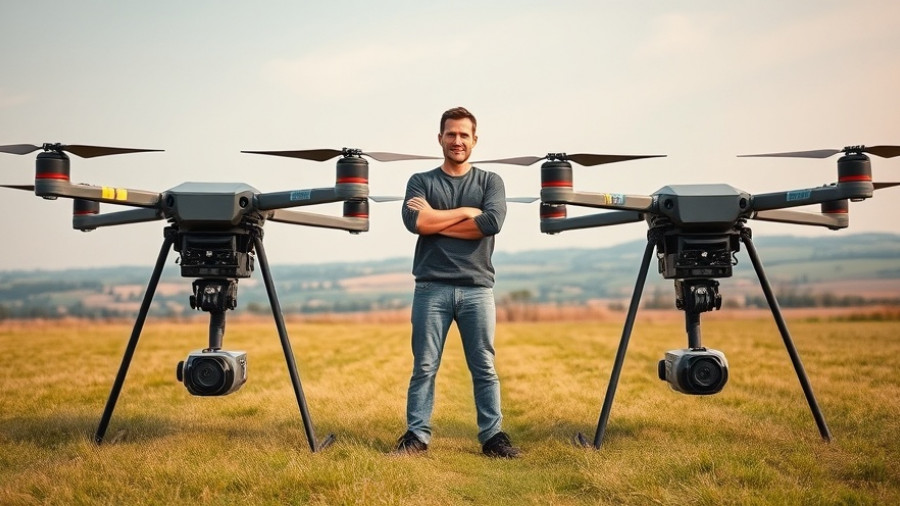
Navigating Wildfire Crisis with High-tech Solutions
In recent years, wildfires have escalated into a pressing global crisis, threatening not only wildlife but also human lives and homes. The innovative startup Seneca is stepping in with an intriguing solution: drones. Recently backed by a significant $60 million investment, these high-tech fire-fighting drones are aimed at fundamentally changing the way we respond to wildfires, offering hope to communities that are bearing the brunt of this climate-induced challenge.
Understanding the Insatiable Wildfire Crisis
California and other regions in the West have seen a dramatic increase in wildfire incidents over the past few decades, leading to severe consequences. The number of acres burned annually has shot up to eight times what it was in the mid-1980s, signifying a clear trend that poses a looming threat to life and property. In 2020 alone, fires ravaged 4.3 million acres in California, larger than the entire state of Connecticut.
The severity of this issue extends beyond California. In Texas, the largest fire in state history occurred last year, covering a million acres. A detailed look reveals that nearly 100 million Americans live at risk from wildfires, with climate change fueling this underreported crisis that costs the U.S. economy about a trillion dollars each year. These alarming statistics underscore the urgency of effective wildfire management strategies.
How Drones Can Change the Game
At the helm of this innovative approach is Stu Landesberg, a former leader of Grove Collaborative, who is now dedicated to tackling the wildfire crisis. By combining advanced drone technology with real-time data capabilities, Seneca has developed a drone capable of detecting fires and applying suppressant materials directly to hotspots.
This method reflects modern advancements in emergency response, similar to initiatives by Drone America and the UAS Center, which focuses on using drones for early fire detection and emergency response support. Their collaborative efforts aim to create real-time mapping and data that empower first responders to act swiftly, thereby minimizing the devastation caused by wildfires.
Broader Impacts on Communities
The implications of using drones for wildfire response extend beyond immediate safety measures. These technologies also offer long-term benefits by helping preserve natural landscapes and safeguarding local communities against future fires. The synergy of technological innovation in wildfire response not only enhances emergency preparedness but also contributes to the resilience of communities against climate volatility.
The Road Ahead: Opportunities and Challenges
The wildfire crisis presents unique challenges, yet innovative startups like Seneca are leading the charge in transforming these challenges into opportunities. As investors pour money into pioneering climate tech solutions, the spotlight turns towards the essential role of aerial firefighting drones in various parts of the world. This ongoing sector is projected to evolve, drawing in not just funding but also talent eager to tackle climate issues.
Potential expansion could include integrating AI technologies for predictive modeling, helping forecast fire-prone weather conditions, and further improving the efficiency of fire response. With more resources and partnerships being forged, the next decade could witness a revolution in how communities respond to wildfires, helping ensure that we can continue to live with nature, rather than against it.
Call to Action: Embracing Technology for a Safer Future
It is time for small business owners and community leaders to advocate for and invest in high-tech solutions like drone technology in wildfire management. By familiarizing themselves with these advancements, they can help protect their communities and contribute toward building resilient systems against the dangers of wildfires. Inform your local governments and organizations about these technologies, and consider how you might integrate them into your business practices.
 Add Row
Add Row  Add
Add 




Write A Comment